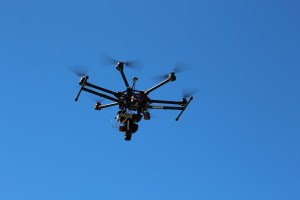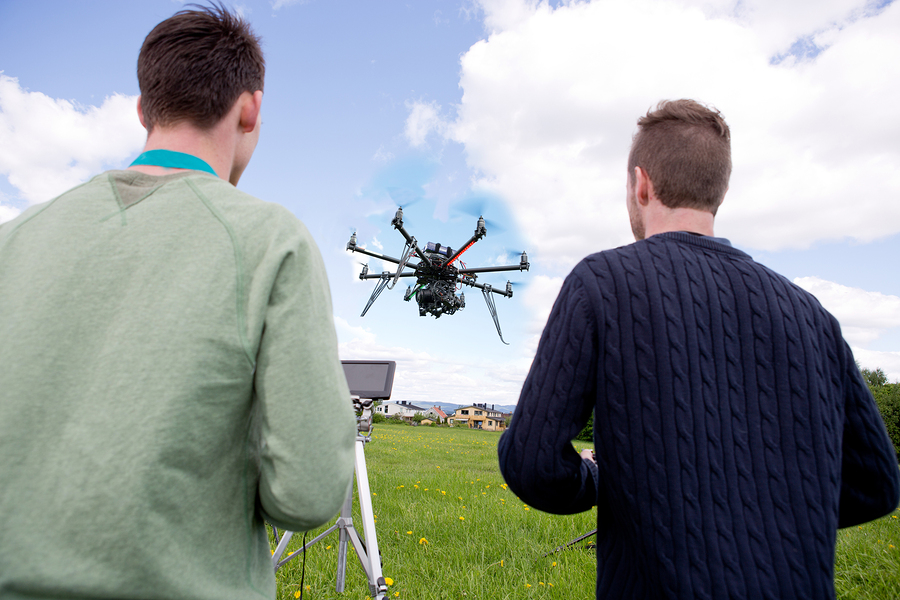A recreational drone operator whose device smashed into a U.S. Army helicopter in September flew undetected into a no-fly zone over New York set up to protect President Donald Trump and the United Nations.
The National Transportation Safety Board on Thursday said the drone flew in air space closed because of the visit by Trump, highlighting gaps in safety and security protections involving the devices that are the size of a medium pizza box. Moreover, the pilot was in Brooklyn but the drone was offshore of Staten Island, violating a rule that operators must keep drones in their sight.
“The pilot of the sUAS intentionally flew the aircraft 2.5 miles away, well beyond visual line of sight,” the NTSB said in the report, referring to the drone as a small unmanned aircraft system.
The crash occurred just off Staten Island on Sept. 21 as light was fading in the evening. The Black Hawk helicopter suffered damage to one of its rotor blades, but was able to land safely. The collision was the first confirmed midair impact in the U.S. between a manned aircraft and one of the millions of drones sold in recent years. Reports of safety incidents involving drones have climbed steadily, and averaged more than 200 a month last summer, according to federal data.
The helicopter was one of two flying in the area as part of the security efforts for the United Nations General Assembly, which was meeting that week. Trump had spoken to the UN two days earlier and security restrictions for his visit were still in effect.

The NTSB report comes as the Federal Aviation Administration is wrestling with multiple drone-safety issues. They include whether to allow routine flights over people, which drones should be required to send radio beacons with their identity and location, and how to build a low-level air-traffic system for the small consumer flying devices.
The recreational operator, who wasn’t identified, told investigators he didn’t know that federal authorities had temporarily banned all drone flights in New York.
A notification system included with the device, made by SZ DJI Technology Co., didn’t advise him of those flight restrictions, the NTSB said. The FAA, which regulates drones and has fined operators in the past, didn’t immediately respond to a request for comment on the incident.
While the accident occurred at an altitude of 274 feet (84 meters), the drone operator had earlier flown to a height of 547 feet, above the FAA’s 400-foot flight limit, the NTSB said. When it reached that height the device was 1.8 miles away from the operator, where it would have been difficult to see any other aircraft, according to the report.
“Even though the sUAS pilot indicated that he knew there were frequently helicopters in the area, he still elected to fly his sUAS beyond visual line of sight, demonstrating his lack of understanding of the potential hazard of collision,” the report said.
The drone was a DJI Phantom 4, a small device made by the world’s largest civilian unmanned aircraft manufacturer.
It’s equipped with what’s known as “geo-fencing,” designed to prevent operators from flying in prohibited zones. However, “this feature is intended for advisory use only, and sUAS pilots are responsible at all times to comply with FAA airspace restrictions,” the NTSB said.
Was this article valuable?
Here are more articles you may enjoy.


 Lawsuits Against BP Over Health Impacts of Deepwater Horizon Cleanup Stalled in Court
Lawsuits Against BP Over Health Impacts of Deepwater Horizon Cleanup Stalled in Court  Report: Insurers Pay $1.6B in Dog Bite Claims, as Frequency Soars
Report: Insurers Pay $1.6B in Dog Bite Claims, as Frequency Soars  Auto Lobbying Groups Unite to Pressure Trump for Tariff Relief
Auto Lobbying Groups Unite to Pressure Trump for Tariff Relief  FEMA Denies Washington State Disaster Relief From Bomb Cyclone, Governor Says
FEMA Denies Washington State Disaster Relief From Bomb Cyclone, Governor Says 